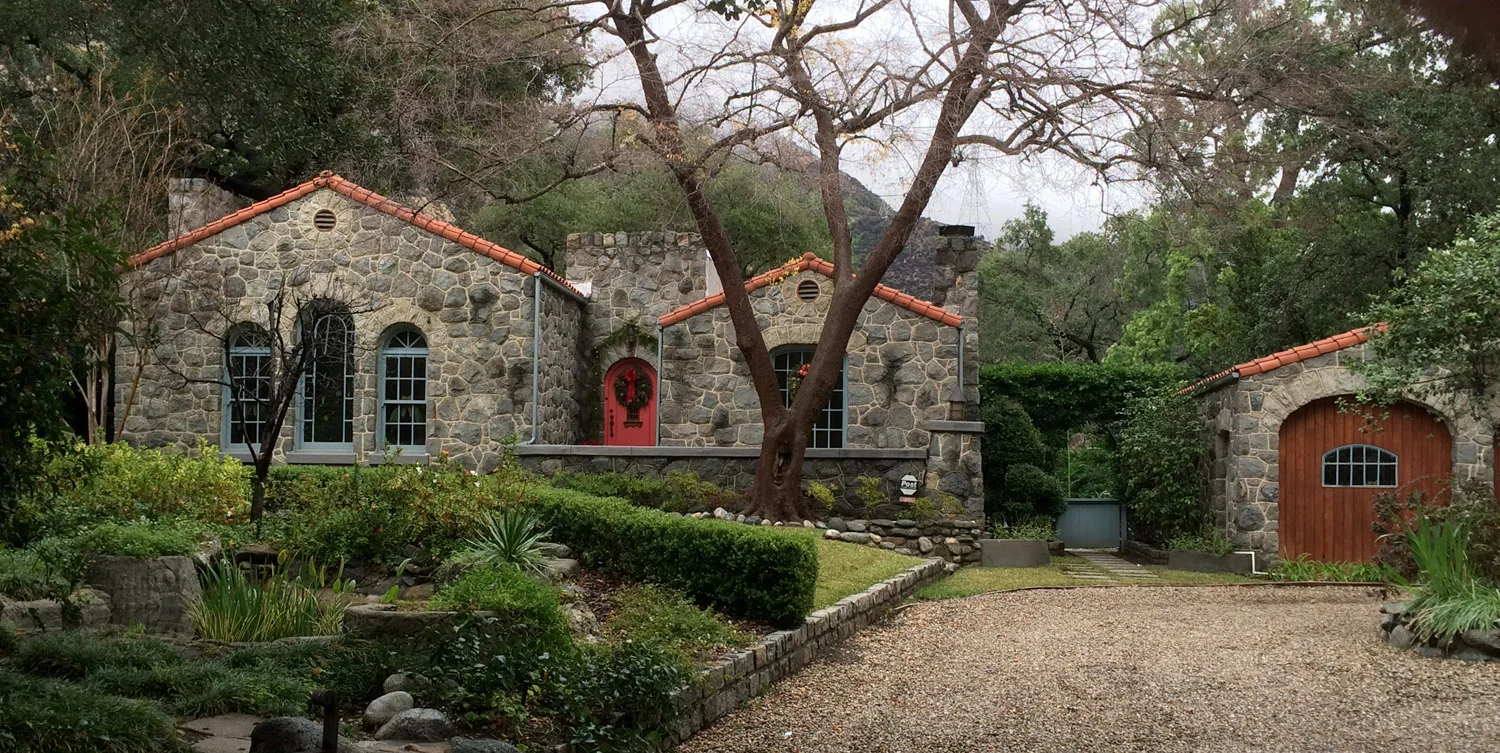Listen to the Stones
ROCKITECTURE -
River Stone Vernacular Art in California
Dreaming of sun ripened oranges, they immigrated from midwest farms to Southern California, the Land Of Sunshine, for healthy living. There they found river washed cobbles, the size of watermellons and basketballs, and, undaunted, with refined precision these mason farmers built lasting and stout churches, stores, and homes. A vernacular architecture blossomed from the remanents of geologic unrest moulded by torrential rains and floods. Rockitecture was born - indigenous structures of rounded granite stones bound into one structural unit by portland cement mortar. These water smoothed boulders waiting millinea for capable ingenious strong hands to set each granite cobble, one by one, together, in a poetry of placement, buildings that stand strong today - a hundred years later. Buildings whose only deterioration are the wood components of roof framing and window frames. Buildings appreciated, loved, and restored by their owners and thousands of volunteers.
Governmental agencies, building codes, and inspectors were not around to help or hinder these inexhaustable pioneers; yet, their Rockitecture buildings remain having survived storms, earthquakes, developers demolition, and rezoning. And more would remain were it not for the unrestrained forces of averice.
The number, just in Southern California which is the focus of the first book, is about 190; and this cursory compilation, though requiring years of research and discovery, presents a large but not complete portion. Rockitecture - a fun term for a tough formidable architectural vernacular.

